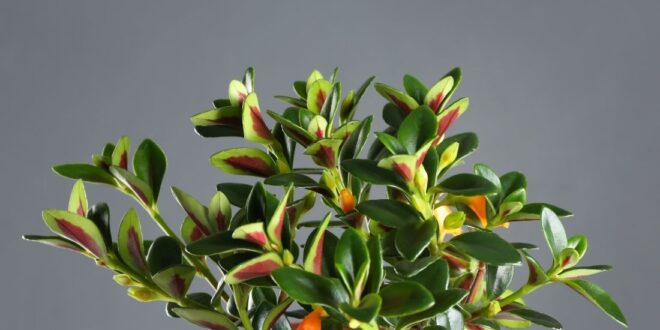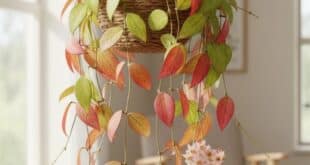Meet The Goldfish Plant
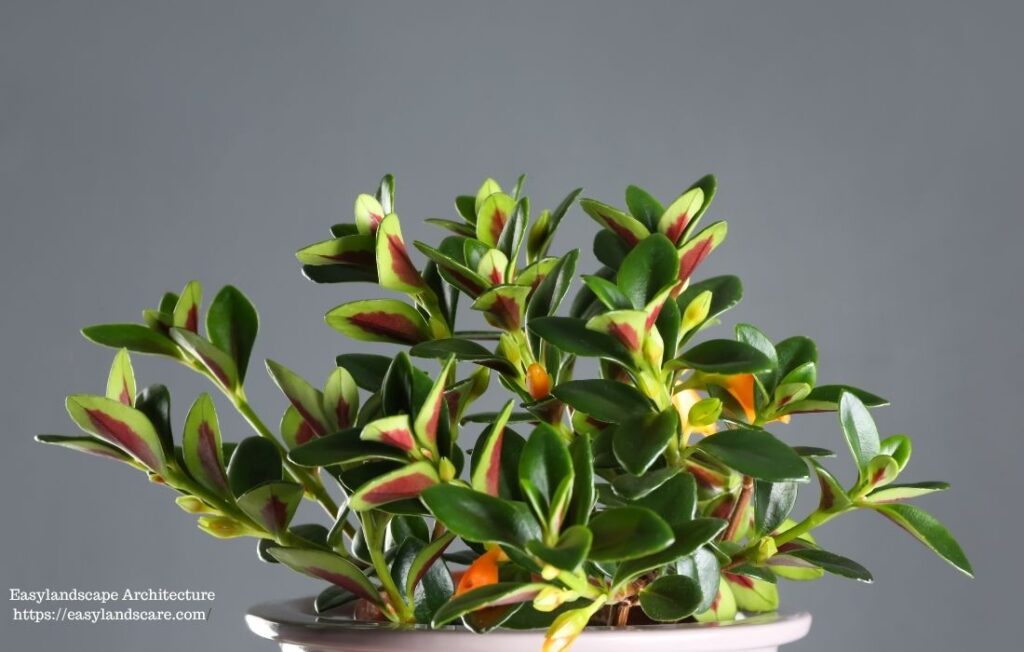
The Goldfish Plant, scientifically known as Nematanthus gregarius and occasionally other species within the Nematanthus genus, is a delightful houseplant cherished for its unique, bright orange flowers that resemble tiny goldfish. Native to the tropical rainforests of Central and South America, this plant offers a vibrant splash of color and a touch of exotic charm to any indoor space. With its trailing or bushy growth habit and relatively easy care, the Goldfish Plant is a rewarding addition for plant enthusiasts seeking something unusual. Let’s explore the fascinating world of this cheerful bloomer and discover how to keep it thriving.
Defining the Goldfish Plant: Unique Blooms and Lush Foliage
The most captivating feature of the Goldfish Plant is undoubtedly its flowers. These tubular, pouch-like blooms emerge from the axils of the leaves and are typically a vibrant orange, sometimes with hints of red or yellow. Their distinctive shape truly mimics small goldfish, often appearing in clusters and creating a whimsical display. The foliage consists of small, glossy, dark green, oval-shaped leaves that provide a lush backdrop to the striking flowers. Depending on the species and pruning, the plant can exhibit either a trailing habit, making it perfect for hanging baskets, or a more upright, bushy form.
Origins of the Goldfish Plant: Rainforest Native
The various species of Goldfish Plants hail from the warm, humid rainforests of Central and South America, particularly regions of Brazil and Costa Rica. In their natural habitat, they often grow as epiphytes or lithophytes, clinging to trees or rocks and thriving in dappled sunlight and high humidity. Understanding their tropical origins provides valuable insight into their preferred growing conditions indoors.
Different Names for the Goldfish Plant and Their Appeal
The common name “Goldfish Plant” is universally recognized and directly refers to the charming shape of its flowers. While there aren’t many other widely used common names, different Nematanthus species might have their own local or horticultural names. The appeal of the name and the plant itself lies in the cheerful and somewhat whimsical nature of its blooms, bringing a touch of the tropics and a smile to those who behold it.
What are the Different Types of Goldfish Plants?
The genus Nematanthus encompasses several species that are cultivated as Goldfish Plants, each with slightly different characteristics:
Popular Goldfish Plant Species
- Nematanthus gregarius: This is perhaps the most commonly recognized “Goldfish Plant.” It features smaller, more numerous flowers that closely resemble goldfish and has a trailing habit.
- Nematanthus wettsteinii: Often called the “Candy Corn Plant” due to its orange flowers tipped with yellow, resembling candy corn. It tends to have a more upright, bushy growth habit.
- Nematanthus ‘Tropicana’: Known for its larger, more vibrant orange flowers and glossy leaves. It can exhibit both trailing and somewhat upright growth.
- Nematanthus nervosus: Features fuzzy, olive-green leaves and orange-red flowers. It has a more distinct texture compared to other species.
Trailing vs. Bushy Varieties: Choosing the Right Form
Depending on the species and how it’s grown, Goldfish Plants can have either a trailing or a more bushy growth habit. Trailing varieties are ideal for hanging baskets and allowing the stems to cascade, showcasing the unique flowers dangling below. Bushy varieties tend to grow more upright and can be well-suited for tabletops or shelves. Consider your available space and desired aesthetic when choosing a variety.
How to Care for a Goldfish Plant?
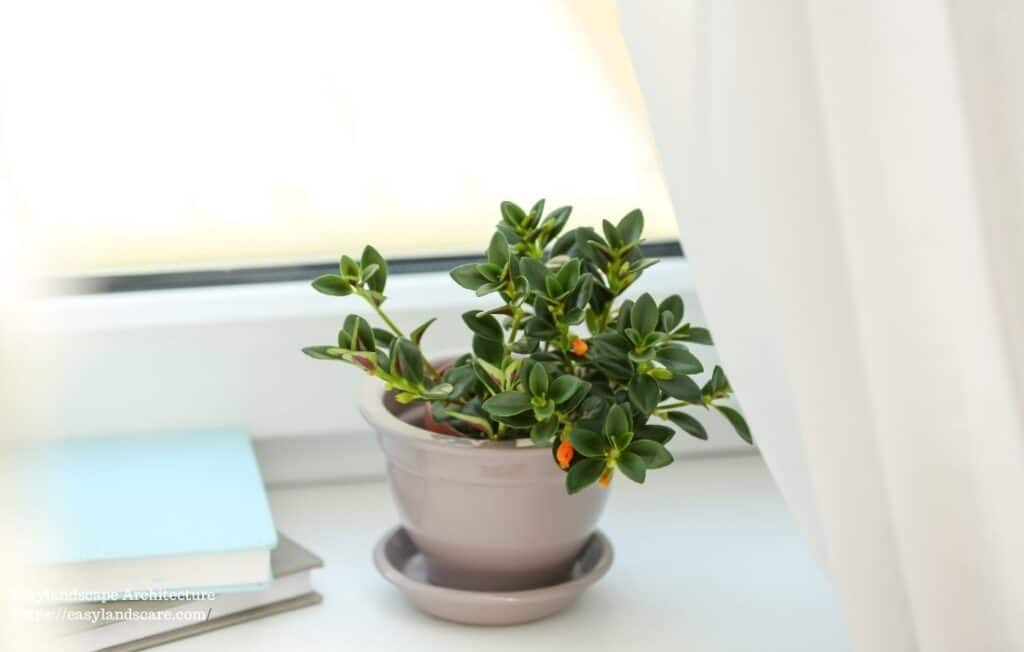
While they bring a touch of the exotic, Goldfish Plants are generally not overly demanding, provided their basic needs are met:
Ideal Light Levels in Goldfish Plant Care: Bright, Indirect Light for Best Blooming
Goldfish Plants thrive in bright, indirect light. Too much direct sunlight can scorch their delicate leaves. An east or west-facing window that provides bright light without direct midday sun is usually ideal. Insufficient light can result in poor flowering and leggy growth.
Watering Needs in Goldfish Plant Care: Keep Soil Evenly Moist, Not Soggy
Consistent moisture is key for Goldfish Plants, especially during their active growing and blooming periods. Water when the top inch of soil feels slightly dry to the touch. Avoid letting the soil dry out completely, but also ensure the pot has good drainage to prevent soggy conditions, which can lead to root rot. Reduce watering slightly during the winter months when growth slows down.
Temperature and Humidity in Goldfish Plant Care: Warm and Humid Conditions Preferred
As tropical natives, Goldfish Plants appreciate warm temperatures, ideally between 65-75°F (18-24°C). They are also fond of higher humidity levels. If your indoor air is dry, especially during winter, consider using a humidifier, placing the pot on a pebble tray with water, or misting the plant regularly to increase humidity around it.
Soil and Pot Selection: Well-Draining Mix is Essential
A well-draining potting mix is crucial for Goldfish Plants to prevent waterlogging. A mix formulated for African violets or a general-purpose potting mix amended with perlite or orchid bark to improve drainage works well. Choose a pot with drainage holes to allow excess water to escape. Repotting is usually only necessary every 1-2 years when the plant becomes root-bound, typically in the spring.
Encouraging Blooms: The Key to Goldfish Plant Flowers
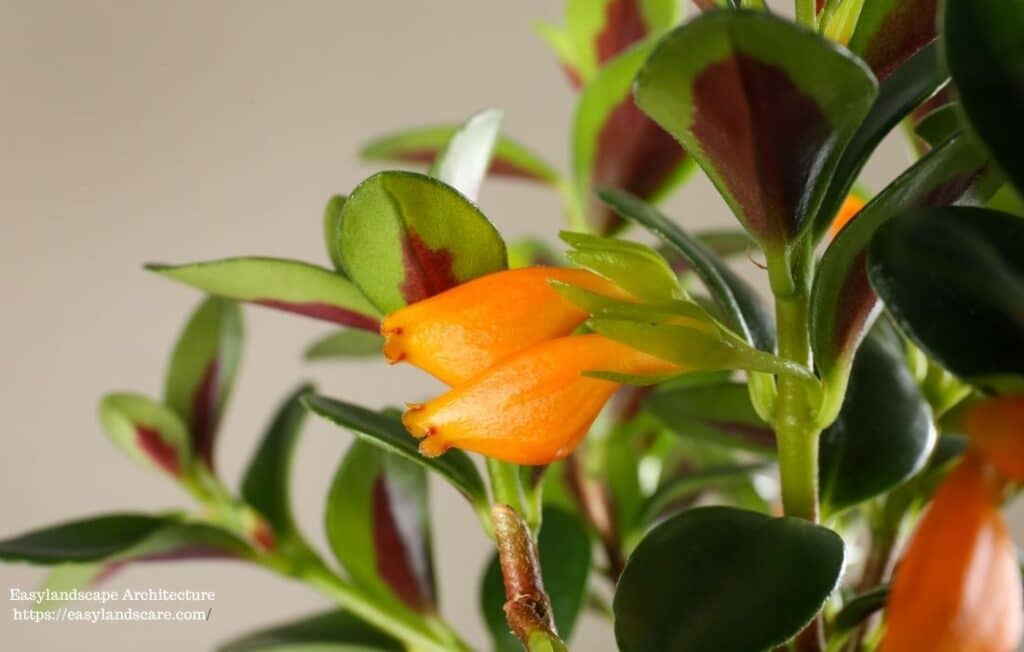
Getting your Goldfish Plant to bloom its charming flowers requires attention to a few key factors:
Light is Crucial for Flower Production
Adequate bright, indirect light is essential for flower development. Insufficient light is a primary reason why Goldfish Plants may fail to bloom. Ensure your plant is receiving enough light, especially during the shorter days of winter.
Temperature Fluctuations Can Trigger Blooming
Interestingly, a slight drop in temperature during the late fall and early winter can actually help to initiate flower bud formation. Allowing the temperature to drop to around 60-65°F (15-18°C) for a few weeks can encourage blooming in the subsequent months. However, avoid exposing the plant to freezing temperatures.
Proper Watering and Fertilizing During Blooming Season
Consistent watering and light feeding with a balanced liquid fertilizer during the spring and summer (the active growing and blooming season) can support healthy flower production. Avoid over-fertilizing, as this can sometimes lead to more foliage growth at the expense of flowers. Use a fertilizer formulated for blooming plants or a balanced fertilizer diluted to half strength every 2-4 weeks during the growing season.
Pruning to Encourage Bushier Growth and More Flowers
Light pruning after a blooming cycle can encourage bushier growth and potentially lead to more flowering points. Pinching back the tips of the stems can promote branching.
Common Issues with Goldfish Plants: Identification and Solutions
While generally easy to care for, Goldfish Plants can sometimes encounter a few common problems:
Leaf Drop: Often Due to Stress or Improper Watering
Sudden leaf drop can be a sign of stress, often caused by inconsistent watering (either too wet or too dry), sudden temperature changes, or low humidity. Evaluate your watering habits and environmental conditions to identify and address the cause.
Lack of Blooms: Insufficient Light is the Usual Suspect
As mentioned earlier, the most common reason for a Goldfish Plant not blooming is insufficient light. Try moving your plant to a brighter location (while still avoiding direct sun).
Leggy Growth: Indicates Insufficient Light
If your Goldfish Plant has long, sparse stems with few leaves, it’s likely not receiving enough light. The plant stretches towards the light source, resulting in this leggy appearance. Provide more bright, indirect light.
Pests: Watch Out for Aphids and Mealybugs
Common houseplant pests like aphids and mealybugs can sometimes infest Goldfish Plants. Regularly inspect your plant for signs of infestation, such as sticky residue, small insects, or cottony masses. Treat infestations promptly with insecticidal soap or neem oil.
Root Rot: Caused by Overwatering and Poor Drainage
Soggy soil and poor drainage can lead to root rot, a serious condition that can kill your plant. Ensure your pot has drainage holes and allow the top inch of soil to dry out between waterings.
Is the Goldfish Plant Toxic? Safety for Pets
According to the ASPCA (American Society for the Prevention of Cruelty to Animals), the Goldfish Plant (Nematanthus spp.) is not listed as toxic to cats, dogs, or horses. This makes it a relatively safe choice for pet-friendly households. However, it’s always a good idea to discourage pets from chewing on houseplants, as ingestion can still cause mild stomach upset in some sensitive animals.
Goldfish Plant for Home Decor: Adding a Touch of Whimsy
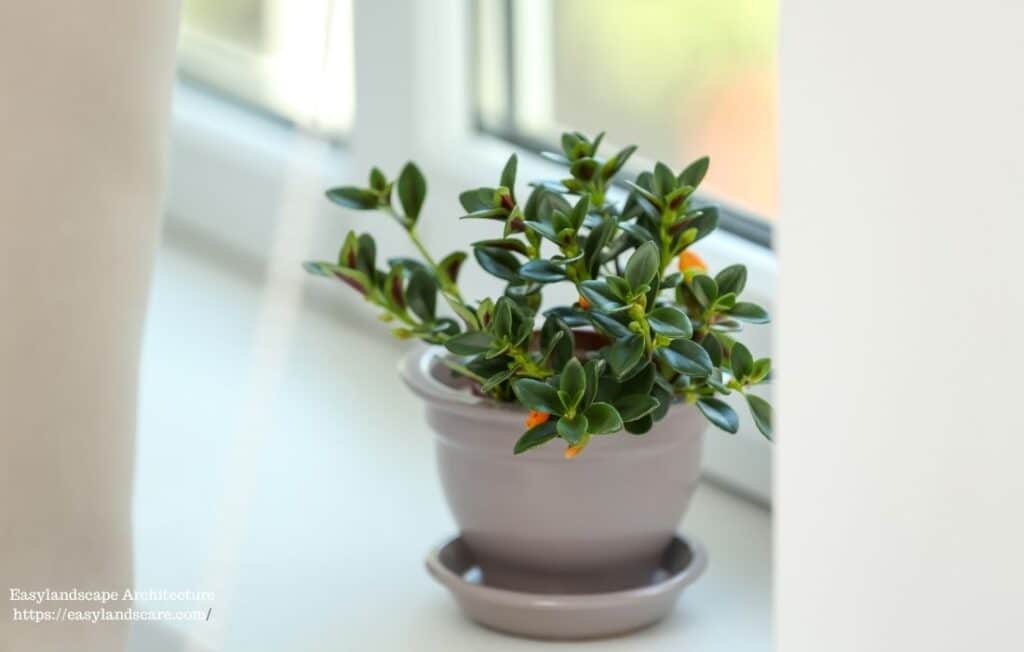
Ideal for Hanging Baskets: Showcasing Trailing Blooms
Trailing varieties are particularly well-suited for hanging baskets, allowing the stems and their delightful blooms to cascade gracefully, creating a focal point in a room.
Brightening Up Shelves and Windowsills
Bushier varieties can add a cheerful splash of color to shelves, tabletops, and windowsills. Choose decorative pots that complement the vibrant orange flowers.
Adding a Tropical Vibe to Any Room
With its rainforest origins and unique blooms, the Goldfish Plant brings a touch of the tropics indoors, adding warmth and vibrancy to your living space.
The Joy of Growing Goldfish Plants: A Rewarding Bloomer
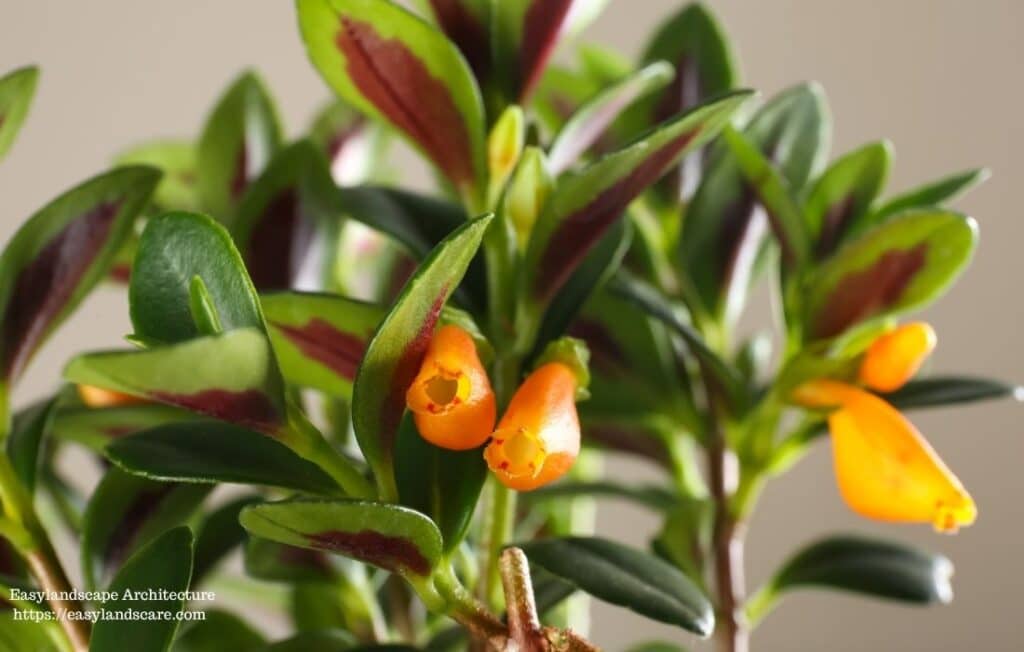
The Goldfish Plant’s unique flowers and lush foliage make it a charming addition to various home decor styles:
The Goldfish Plant, with its distinctive flowers and relatively easy care, offers a rewarding experience for indoor gardeners. Its cheerful blooms are a constant source of delight, bringing a touch of the exotic and a smile to your face. By providing the right light, water, and a bit of humidity, you can enjoy the whimsical beauty of this charming tropical gem in your own home.
In conclusion, the Goldfish Plant is a captivating addition to any indoor garden, offering both aesthetic appeal and a manageable care routine. With the right conditions, this plant will thrive and bring a cheerful, tropical vibe to your living space. To discover other indoor plants as beautiful as the spider plant, we recommend reading our article on the Best Indoor Plants: Top 15 Picks and Care Tips

